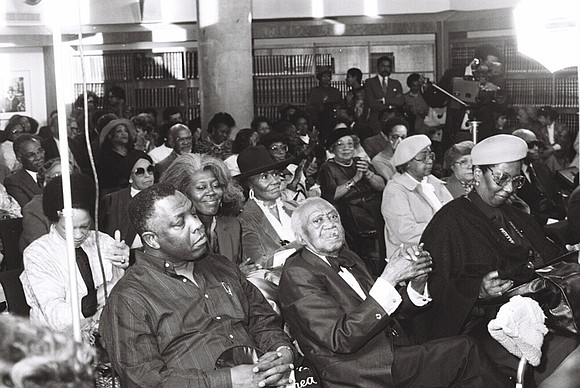‘Ayida’ at VCU’s ICA celebrates Caribbean culture and diaspora
Free Press staff report | 7/3/2025, 6 p.m.

The Institute for Contemporary Art at Virginia Commonwealth University recently opened “Ayida,” a group art exhibition celebrating the Caribbean and its diaspora, that will be on display through early 2026.
The free exhibition, curated by guest curator Serubiri Moses with support from ICA Assistant Curator Egbert Vongmalaithong, features work by five early- to mid-career artists. It will remain on display through early 2026.
Inspired by the life and work of Haitian poet Assotto Saint (1957-1994), a prominent figure in New York’s Black and gay writers movement of the 1980s, the exhibition explores the merging of cultures, especially Saint’s complex relationship with Haitian Vodou. The religion, which has African and Catholic roots and is widely practiced in Haiti, often faces prejudice in Western societies.
Artists in the show examine spiritual, material and intellectual cultures of Haiti, the Dominican Republic and other Caribbean sites through archives, photography, sculpture, installation and print- making.
Moses, a New York-based writer and curator, became interested in Saint while researching Black LGBTQ+ writers active during the early years of the HIV/AIDS epidemic. In 2017, Moses viewed the “In the Life Archive” at the Schomburg Center for Research in Black Culture, part of the New York Public Library, where he encountered Saint’s archival work.
“In examining the Saint papers, I started to reflect on who Saint was prior to his migration to New York,” Moses said. He noted Saint’s frequent evocation of deities such as Ayida-Wedo, a Haitian odou god associated with the earth and origins.
“The focus on place or diaspora in this exhibition is a way of showing how the Dominican Republic and Haiti have a profound impact on the work of Black artists working today,” Moses said.
The exhibition features artists Lizania Cruz, Oletha DeVane, Thomas Allen Harris, mujero and Didier William.
Their multidisciplinary work addresses themes of migration, belonging, spirituality, Afro-diaspora religions and Black, queer and Caribbean identity.
Harris, a documentary photographer and filmmaker who knew Saint, included a film clip of Saint at a Kwanzaa celebration in New York in the early 1990s.
The exhibit also draws on research by the late Dominican sociologist Fradique Lizardo into el Gagá, a movement-based Vodou tradition. Moses said he hopes visitors will gain a deeper understanding of how ritual occurs daily outside formal religion and learn about the intellectual traditions shaping the Caribbean and American art.





